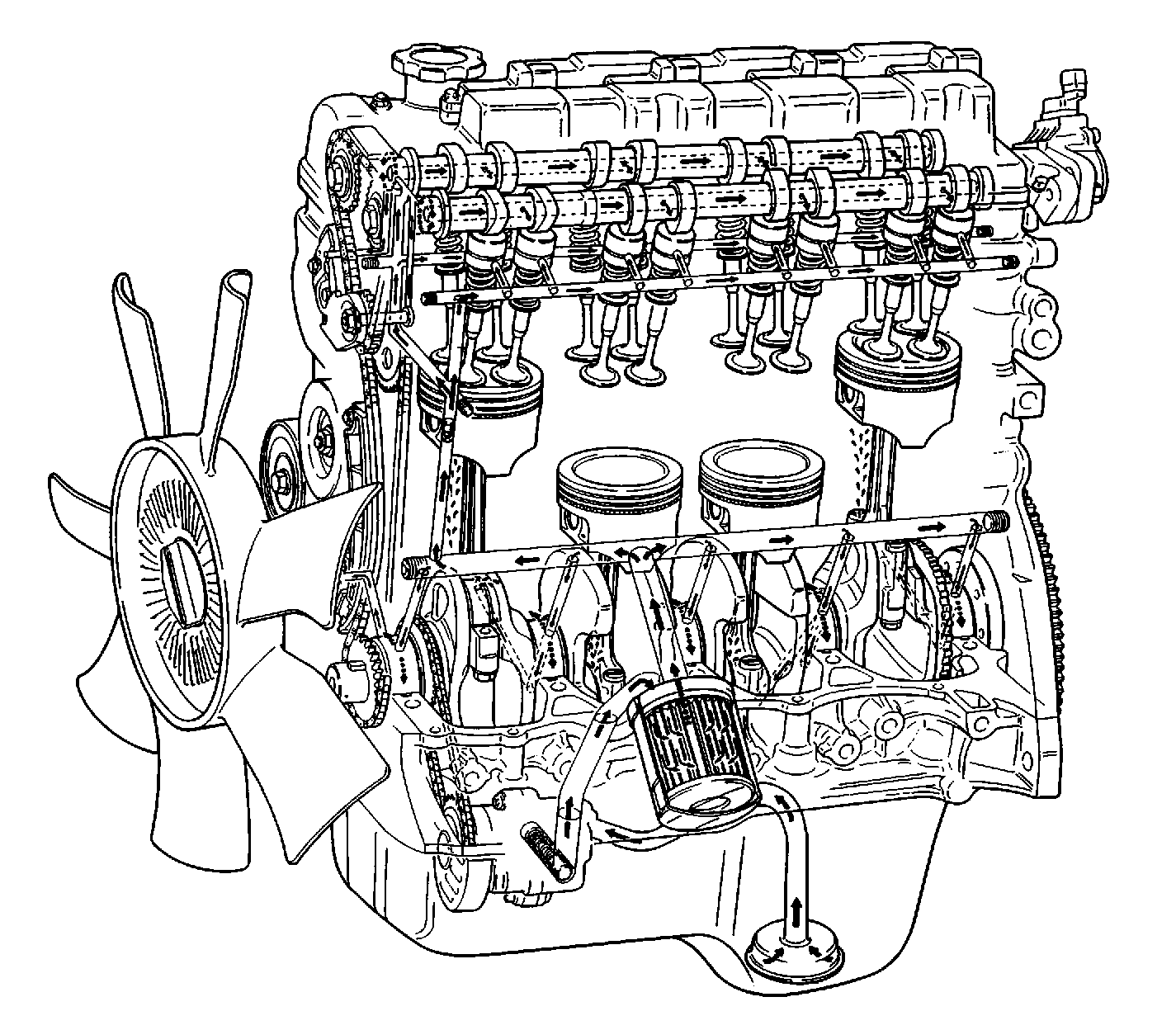
The lubrication system consists of an oil pan, oil pump screen, oil pump, oil filter and oil pressure regulator. This pressure-fed lubrication system supplies oil to the moving parts of the engine.
The oil pump is bolted to the bottom of the lower crankcase. A sprocket on the front of the oil pump is driven by a chain from the sprocket on the front of the crankshaft. The tension on the oil pump drive chain is accomplished by an adjustable guide.
The oil pump picks up oil from the oil pan and feeds it under pressure to the various parts of the engine. An oil strainer is mounted before the inlet to the oil pump to remove impurities which could clog or damage the oil pump or other engine components. The oil pump itself is a trochoid gear type pump with internal drive and driven gears. When the drive rotates, the driven gear rotates in the same direction, but on a different center point. This causes the space between the gears to constantly open and narrow, pulling oil in from the oil pan when the space opens and pumping the oil out to the engine as it narrows.
The oil filter is a full flow type with a relief valve built into the paper filter element. Contaminants which can get into the oil during operation could cause accelerated engine wear or seizing if allowed into the engine. The oil filter, situated at the beginning of the oil passage circuit, removes these contaminants as the oil passes through it. The relief valve spring will open under the pressure of the oil and allow oil to bypass the filter and flow directly to the engine.
At high engine speeds, the oil pump supplies a much higher amount of oil than required for lubrication of the engine. The oil pressure regulator prevents too much oil from entering the engine lubrication passages. During normal oil supply, a coil spring and valve keeps the bypass closed, directing all oil pumped to the engine. When the amount of oil being pumped increases, the pressure becomes high enough (420 kPa (60 psi) to overcome the force of the spring, opening the valve and allowing excess oil to flow through the valve and drain back to the oil pan.
Oil is pumped from the oil pan by the oil pump. After it passes through the oil filter, it is fed through two paths to lubricate the cylinder block and cylinder head.
In one path, the oil is pumped through oil passages in the crankshaft to the connecting rods, then to the pistons and cylinders. It then drains back to the oil pan.
In the second path, the oil is pumped through the oil control valve, which consists of an orifice and a check ball, and then through passages to the camshaft and the hydraulic valve lash adjusters. The oil passes through internal passageways in the camshafts to lubricate the valve assemblies before draining back to the oil pan.
